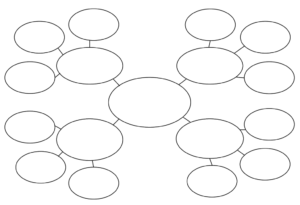Graphic Organizers Enhance Learning For Aspergers
Written by SAPL on December 14th, 2018 in Children and Adolescents, Education.
For many Asperger adolescents, the ability to organize and place things in a similar category may be more difficult than for the neurotypical adolescent.
The idea of placing ideas in groups to master the concept is nothing novel, but the idea of using electronic devices or assistive technology to do so is something to consider.
There are several forms of graphic organizing, and this can be done both via software technology or the old-fashioned paper and pencil way.
When searching for ideas to assist someone on the spectrum with idea organization, these are the main forms you might want to consider:
1. Graphic Organizers: Involves filling in a map or diagram as a way to organize a concept. The map is elaborated when facts or other ideas are added.
2. Concept Mapping: Similar to a graphic organizer, but words or phrases are added to illustrate the link between the concepts.
3. Mind Mapping: Used for creative thinking and/or brainstorming. Images, words and other descriptions expand upon a central idea.
4. Webbing: Illustrates how various categories are related to one another.
5. Outlining: The most verbal of all organizers. Uses headings, subheadings and complete sentences and even paragraphs to create a draft of an idea, such as for an essay.
6. Plots and Graphs: Ideal for data-driven concepts, such as science and math. Demonstrates links between numbers. Examples include diagrams, charts, plots, graphs with labels and axis.


